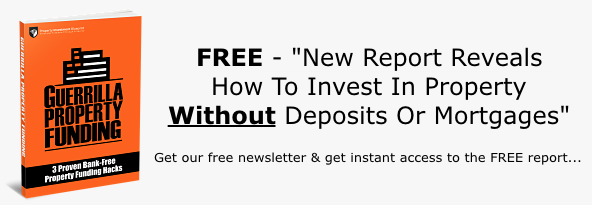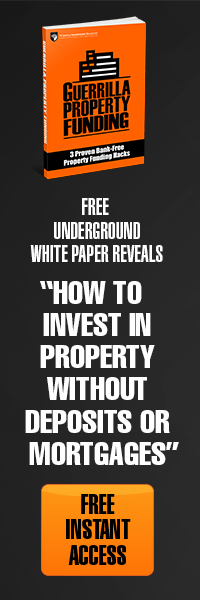
Investment Property Mortgage Rate - A Red Herring?
Is the investment property mortgage rate a red herring? In this article, we tackle this question and more.
Despite the government attempts to push more first time buyers onto the ladder with low rates and help with a deposit, the rental market continues to offer attractive yields for investors across the UK.
As house prices are yet to rise in any significant manner, many homeowners are dipping a toe into the buy to let market, and existing landlords are adding to their portfolio.
To ensure the highest return on investment (ROI), getting the right finance is almost as important as buying the right property.
Effect of lender criteria on ROI
Many first time investors will approach their bank first and, unfortunately, ending your mortgage search there can be costly - not that the high street banks will tell you that.
Limiting your options to one lender can not only mean you pay higher interest, but often it can change your plans as you have to fit around strict criteria.

In an ideal world the investor would choose finance that fits around their project, finances and timescales.
Some lenders limit borrowing at lower loan-to-values. Others apply stricter affordability calculations and may lend you a lot less than other lenders. Other criteria can mean the difference between being accepted or declined.
Do you have a personal income under £25k? You can count out half of the banks.
Have no income at all? You'll have 2 or 3 options if you're lucky.
Have a very large portfolio of properties? Only one or two lenders will consider lending.
Want to let to students? Expect many lenders to say no.
The lesson here is to make sure that you shop around. And not just the 'quickly check a comparison site' kind of shopping around, proper shopping around!
Attend any auction or investment club and you'll find that the most experienced landlords either have enough money to buy property in cash, or have an independent advisor they use to secure the finance they need.

Effect of investment property mortgage rates & fees on ROI
The headline investment property mortgage rate that banks advertise is sometimes hard to believe, and in fact for many borrowers can be misleading. Remember, there's far more to the best deal than the rate alone.
Investment mortgages, like standard residential mortgages, begin with an initial rate period - usually fixed above, or tracking the base rate for 2-5 years (although some 10, 15, and even lifetime products do exist).
Calculating the best deal involves looking at the total cost over this period, factoring in upfront fees, lender product fees and (should you be planning to repay the mortgage during this period) any early settlement charges.
The most attractive investment property mortgage rates are often accompanied by the most inflated arrangement fees.
When borrowing £100k on a 2 year fixed deal, would a 4% rate with £999 fee be better or worse than a 3.6% rate with 2% arrangement fee?
Let's find out...
4% = £333 x 24 = 7992 + 999 = £8991
3.6% = £300 x 24 = 7200 + 2000 = £9200
The lower rate may bring about cheaper monthly payment, and cost £700 less over the 2 years, but including the higher fee is over £200 more expensive.
£200 for every mortgage can add up, and that's just on a £100k investment, the figures are even more significant the more you borrow.
Efffect of fee type on ROI
Arrangement fees are notoriously more expensive on buy to let mortgages than residential, and are charged in one of 2 ways - a fixed fee (say £999), or a percentage of the loan amount (say 2%).
The more you borrow, the more important it is to consider mortgages with fixed fees. Borrowing £200k for example, would attract a £4k fee if chargedat 2%, or £999 on a flat fee, and it'd take a very good investment property mortgage rate to beat a £3k difference.

Effect of early repayment charges on ROI
There are hundreds of different investment mortgage products, each of which will usually have some form of repayment penalty should you choose to settle earlier than the initial period agreed.
This is done so that the lender can recoup some of the lost interest. Some products are setup on a tapered basis, charging 3% of the amount re-paid in year 1, 2% in year 2, 1% in year 3, or 5 year deals that perhaps start at 5% and taper down.
Other products are charged at a flat 2 or 3% for the entire period.
Others (although more rare in investment products compared to residential) don't charge repayment fees at all - ideal for the short term investor or an investor who isn't sure if they'll repay early or not.
If you are borrowing on a particularly short term basis however, say 0-12 months, then bridging finance may be worth considering.
Effect of property type on ROI
The type of property and tenant can impact the type of finance you need.
Standard residential buy to let's are for those who are letting a standard property, that is, a fully habitable and purpose built residential dwelling, to tenants on a single AST tenancy agreement.
Finance for a house of multiple occupants (HMO), that is, a fully habitable dwelling with self-contained rooms for multiple tenants to 'house share', each with their own separate tenancy agreement.
Finance for commercial property, where the building is used for commercial purposes such as a shop or restaurant as it primary purpose. This may also have residential accommodation attached, but lenders usually deem the entire property as commercial in most circumstances.
Commercial finance tends to be the most expansive, and demands the highest deposit/equity (min 30-40% usually), followed by HMO (min 25%) and then buy to let (min 25-20%).
Independent investment mortgage broker
Here at PiB, we provide specialist mortgages and finance to property investors and developers just like you, in partnership with one of the most experienced advisors in the UK. Request a free quote today.
<< Back to Financing Investment Property from Investment Property Mortgage Rate
<< Back to Property Investment Blueprint from Investment Property Mortgage Rate
Guest author profile
 |
Pete M writes for Online Mortgage Advisor, a whole of market independent mortgage broker specialising in buy to let and buy to sell mortgages. |



